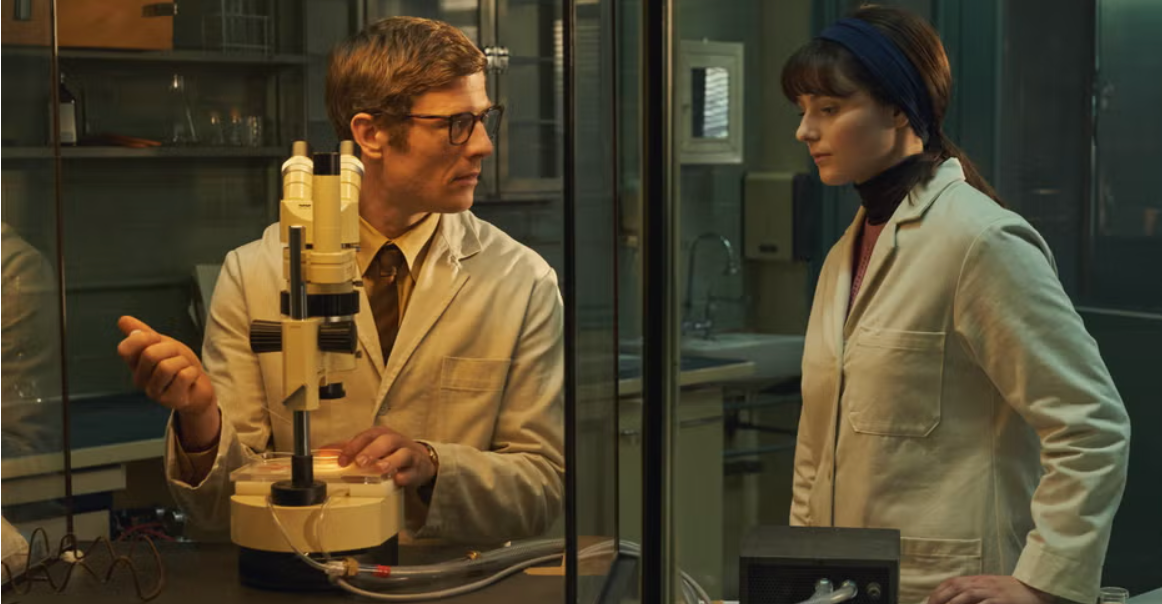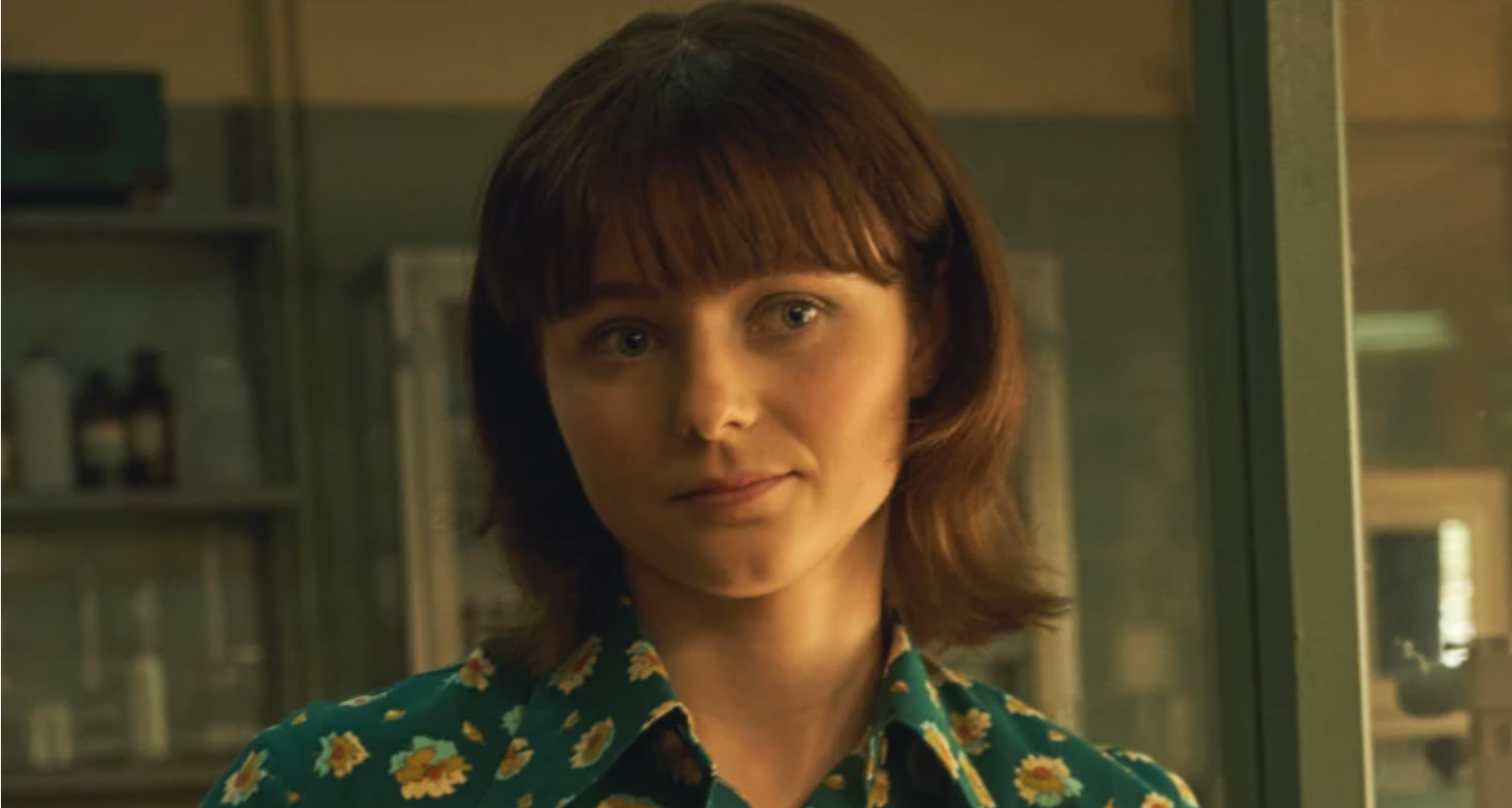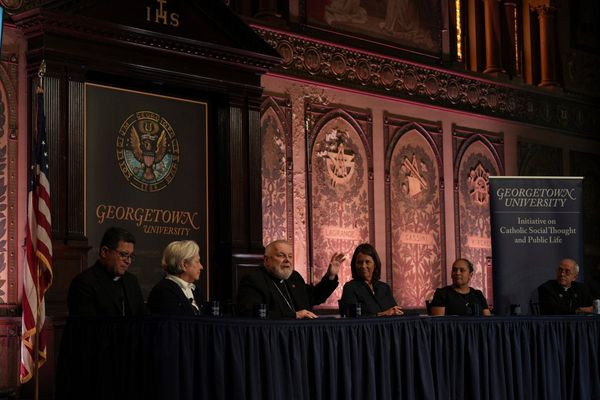New Netflix film Joy has been astounding viewers with the true story of the decades of research that went into the development of IVF
The film follows the the pioneering breakthrough led by scientist Robert Edwards (James Norton), surgeon Patrick Steptoe (Bill Nighy) and scientist Jean Purdy (Thomasin McKenzie), who were on a mission to unlock the puzzle of infertility during the Sixties and Seventies, until the first IVF baby, Louise Joy Brown, was born at Oldham Hospital, Manchester, in 1978.
It shows how Purdy, whose name is often the forgotten third party in the story, risked losing her relationship with her mother over her involvement in the scientific trials, and overcame obstacles as a woman working in a male-dominated field.
In 1968, embryologist Edwards convinced gynaecologist and obstetrician Patrick Steptoe, who introduced laparoscopy (a minimally invasive surgical procedure to observe the abdomen), to collaborate with him on developing a way of fertilising an egg outside of the human body and transferred into the womb afterwards.
Purdy, a qualified nurse, was hired by Edwards as a lab technician aged 23, but her role in the development of IVF went way beyond that job description.
The movie shows the odds that the trio came up against over the course of a decade: facing moral outcry from science authorities, the church and the state. Religious leaders thought it could interfere with “God’s plans for creating life”, while others had fears about babies being born with abnormalities or birth defects.
The three faced extreme ridicule from state authorities and the press, with Norton’s character branded a “Frankenstein doctor”.
This meant they had no financial support from medical authorities, forcing them to fund the research themselves out of Kershaw’s Cottage Hospital in Oldham, where they were given permission to do their research in their spare time. The film shows how Edwards and Purdy would travel to Manchester from where they lived in Cambridge, and would rarely see their families.

Purdy managed the laboratories, analysed and recorded the data, and acted as a compassionate confidante to the volunteering patients who were partaking in the trial and desperately wanted to have children. She contributed significantly to the scientific papers written, and was cited as a co-author on papers written by Edwards between 1970 and 1985.
Purdy was the first person to witness the successful cell division of the embryo, and she oversaw the birth of Alistair MacDonald, the first IVF baby boy, born in 1979.
Though the team had made a huge breakthrough, the NHS refused to support them in setting up an IVF service, forcing them to look for funds for a private clinic. Purdy found Bourn Hall, a local manor in Cambridge, which became the world’s first IVF clinic in 1980. Purdy was the Technical Director.
Despite her involvement, Purdy’s name is often forgotten in popular retellings of the story, and her contribution is often overlooked in favour of Edwards and Steptoe.
Purdy died in 1985, aged 39, from malignant melanoma. Though Steptoe died in 1988, Edwards often campaigned for Purdy’s contributions to be recognised as IVF became more widely celebrated. He unsuccessfully lobbied for her name to be added to the commemorative plaque at the site of their original clinic, and it wasn’t until 2015 – 30 years after her death – that Purdy’s name was put onto a new plaque.
Brown, who was involved in the making of the film, is now 46 and is a global IVF advocate. Her younger sister, Natalie Brown, was also conceived through IVF four years after her, and she became the 40th baby born via IVF.

The creators behind the film also have a personal connection to the story: co-writers, Jack Thorne and his wife Rachel Mason, welcomed their son Elliott via IVF, while director Ben Taylor also has a personal connection to IVF through the birth of his two sons.
The film, which is currently in Netflix’s top watched films in the UK, has been leaving viewers both astounded and emotional about the conception of IVF.
“My wife and I just sat and watched Joy on Netflix. As IVF parents, we were in absolute bits. Incredible people who did incredible things,” wrote one viewer on X/Twitter. “Feel privileged to be a part of that club and seeing how the story began, and the people who blazed the trail, was just a beautiful thing.”
Another person added that they were shocked to hear of how Purdy was overlooked in the recognition of the breakthrough.
“Just watched Joy on Netflix, a brilliantly made film. Was surprised to learn that Jean Purdy’s name was only added to the IVF plaque 30 years after her death.”
Another added: “If you need a little feel good film during the gloom that is November in the UK, watch Joy on Netflix. Absolutely fantastic and, even though it’s my local hospital I had no idea that Oldham was so pivotal in IVF.”







